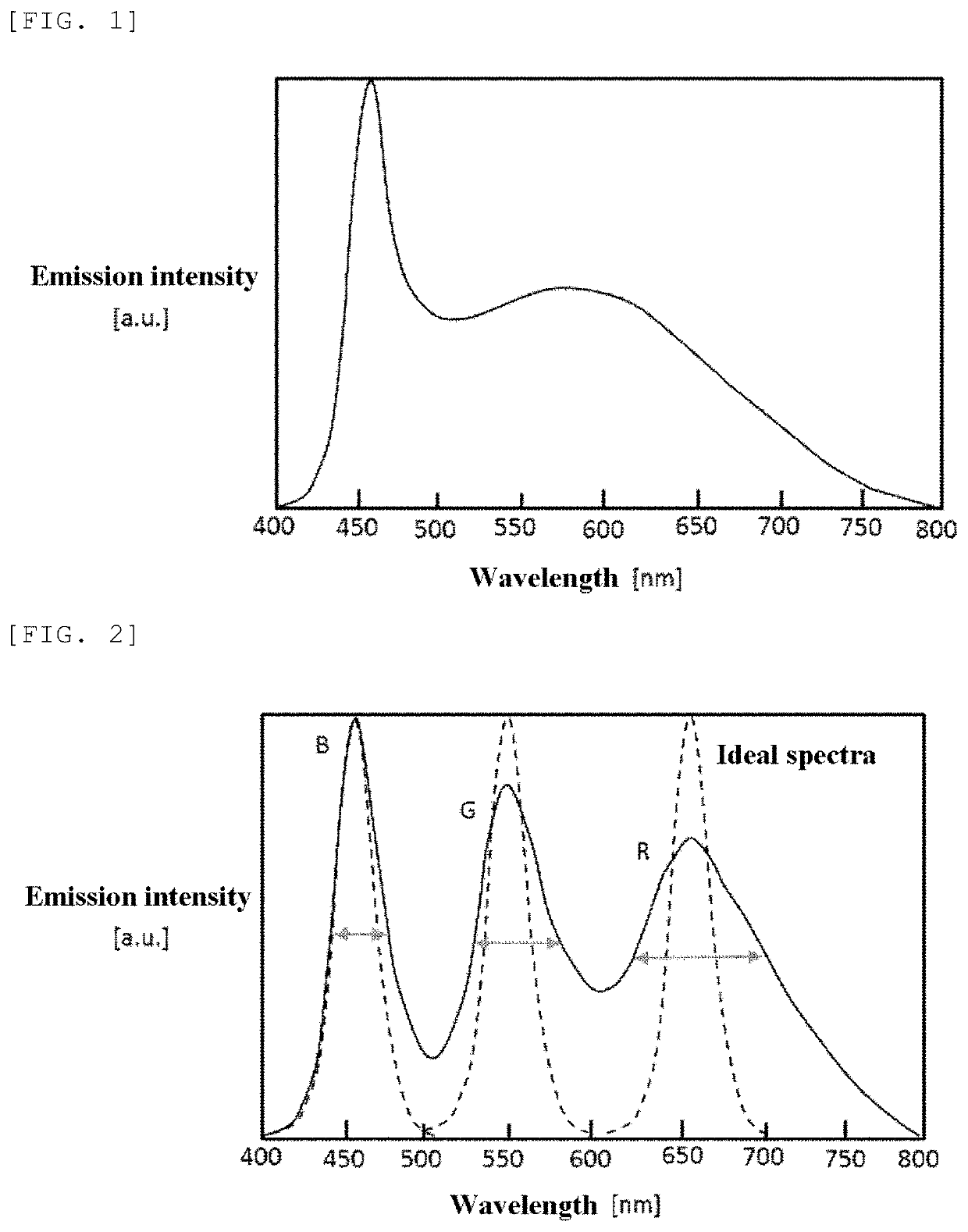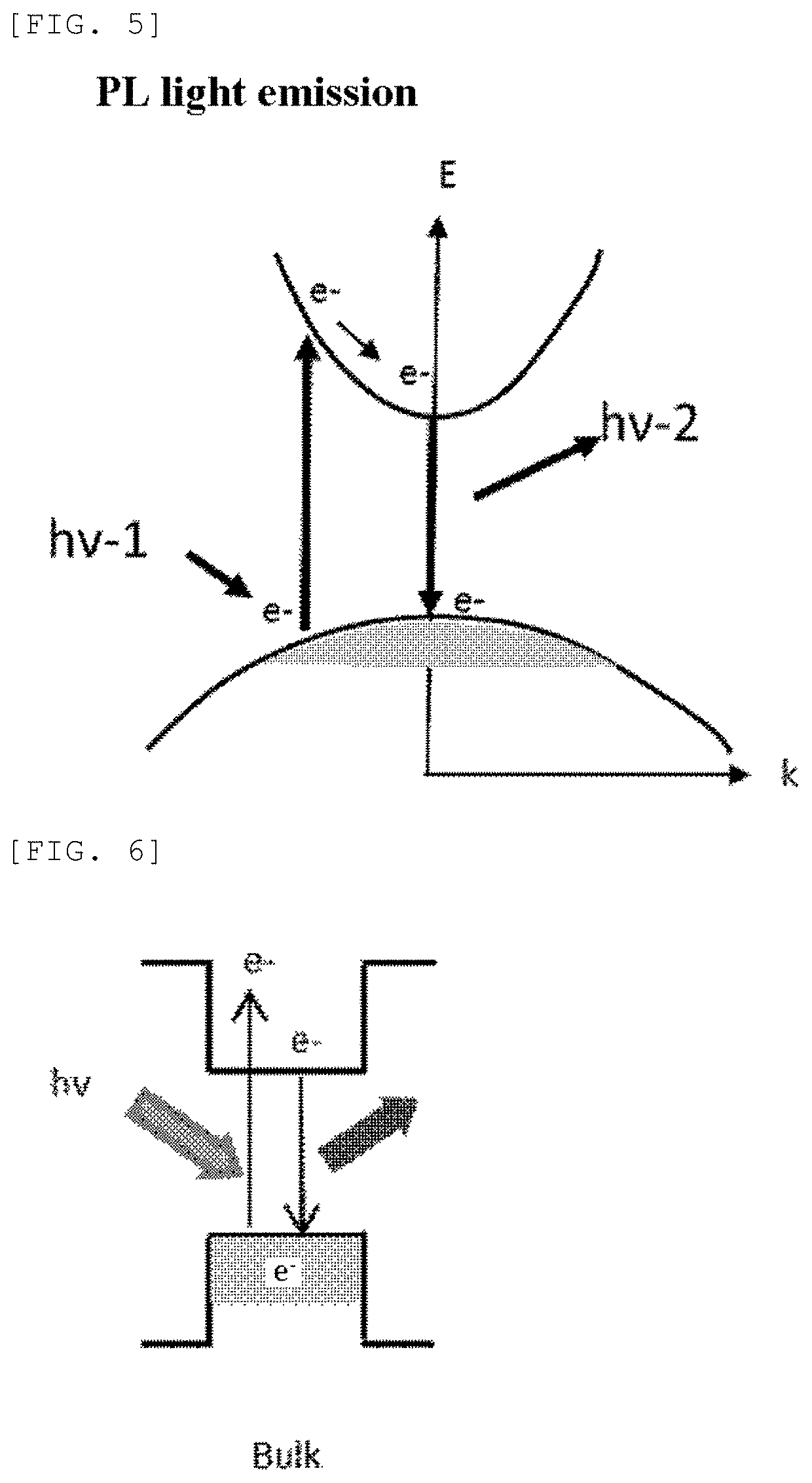Semiconductor phosphor
- Summary
- Abstract
- Description
- Claims
- Application Information
AI Technical Summary
Benefits of technology
Problems solved by technology
Method used
Image
Examples
example 1
[0060]Targeting the red region, an AlGaInP multilayer thin film shown in FIG. 14 was grown on a GaAs substrate by using an MOVPE apparatus according to the same procedure for common LED crystals. The layer for PL light emission was an MQW of GaInP (well layer) / AlInP (barrier layer), and the target wavelength was 635 [nm] at the peak wavelength. The dopant was Si with a carrier concentration of 3.5E17 [ / cm3]. Then, the GaAs substrate was removed by chemical etching because the target wavelength and equivalent wavelengths are absorbed otherwise. Subsequently, the grown multilayer thin film was bonded to a sapphire substrate with an adhesive agent. Thus, a semiconductor phosphor was obtained. The obtained semiconductor phosphor had a multiple quantum well structure which had 40 pairs of active layers each made of GaInP with a thickness of 5 nm and barrier layers each made of AlInP with a thickness 5 nm, and which was sandwiched by undoped cladding layers each made of AlInP with a thick...
example 2
[0064]Further, a semiconductor phosphor was prepared by the same method as in Example 1, except that the composition of the active layer was changed so as to emit light with a longer wavelength. The emission spectrum was measured. As a result, the half-value width was approximately 30 [nm] as shown in FIG. 19 and slightly increased in comparison with the semiconductor phosphor of Example 1, but the obtained emission spectrum was sharp at λp=660 [nm]. Thus, as a feature of the present invention, the wavelength can be changed exactly in the same manner as in ordinary LEDs.
[0065]From the foregoing, according to the present invention, as shown in FIG. 18, the phosphor with quite a sharp half-value width was successfully obtained. Thus, the ideal RGB spectrums shown in FIG. 2 can be obtained. It has been revealed that the present invention makes is possible to provide a semiconductor phosphor which allows easy wavelength adjustment, high efficiency and stability.
PUM
 Login to View More
Login to View More Abstract
Description
Claims
Application Information
 Login to View More
Login to View More - R&D
- Intellectual Property
- Life Sciences
- Materials
- Tech Scout
- Unparalleled Data Quality
- Higher Quality Content
- 60% Fewer Hallucinations
Browse by: Latest US Patents, China's latest patents, Technical Efficacy Thesaurus, Application Domain, Technology Topic, Popular Technical Reports.
© 2025 PatSnap. All rights reserved.Legal|Privacy policy|Modern Slavery Act Transparency Statement|Sitemap|About US| Contact US: help@patsnap.com



